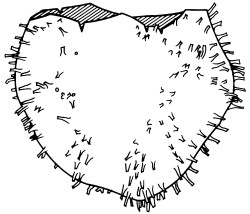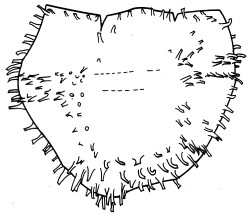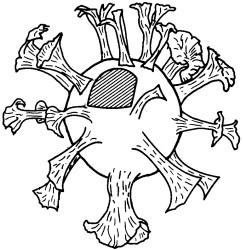Difference between revisions of "DRAWING FORMAT"
From dinoflaj3
| Line 14: | Line 14: | ||
[[Image:Cerbia_A.jpg]][[Image:Cerbia_B.jpg]] <I>[[Cerbia]]</I> | [[Image:Cerbia_A.jpg]][[Image:Cerbia_B.jpg]] <I>[[Cerbia]]</I> | ||
| − | |||
| − | |||
[[Image:Discorsia.jpg]] <I>[[Discorsia]]</I> | [[Image:Discorsia.jpg]] <I>[[Discorsia]]</I> | ||
[[Image:Cordosphaeridium_cantharellus.jpg]] <I>[[Cordosphaeridium cantharellus]]</I> | [[Image:Cordosphaeridium_cantharellus.jpg]] <I>[[Cordosphaeridium cantharellus]]</I> | ||
Revision as of 20:34, 2 January 2017
We are looking for simple line drawings of fossil dinoflagellates that do not yet have images in the current version of DINOFLAJ3. These should be vector drawings generated using programs such as Adobe Illustrator or CorelDraw, not scanned images or photographs of specimens. For a good example of the style, refer to Stover and Williams (1987).
Drawings should be simplified to show the relevant features of the taxon in an idealized form, possibly from more than one orientation. Opercula can be present or not, but it is preferred that an archeopyle be indicated somehow. The linework and shading should consist of:
- 1-point or 0.5 point lines, or rarely 1.5 or 2 point, depending on desired emphasis (e.g., varying wall thickness)
- a dashed line, gap, and/or 45-degree hatched area (hatch down to the left) to indicate an archeopyle
- simple grey shading of filled areas can indicate variations in wall thickness
- insets or separate drawings can show details too small to show on the main diagram (e.g., ornamentation)
- if tabulation is indicated with labels, they should use a sans-serif font such as Helvetica or Arial
- if depicted separately, an operculum should be the same scale as the rest of the dinocyst
Refer to the following images for examples:




